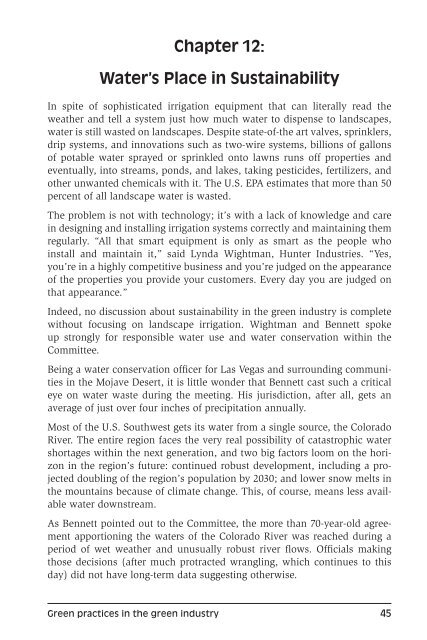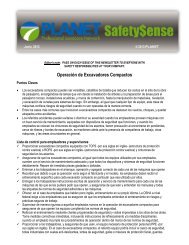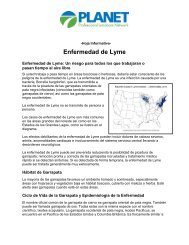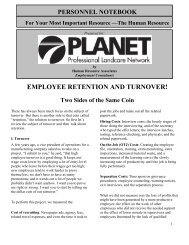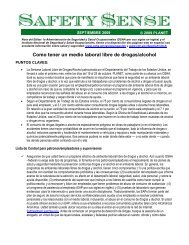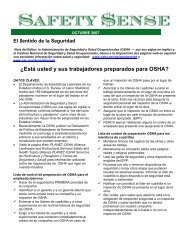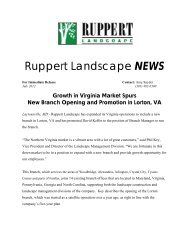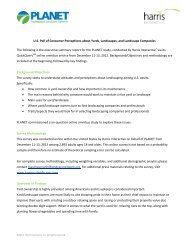Green Industry ECOnomics - LandcareNetwork.org
Green Industry ECOnomics - LandcareNetwork.org
Green Industry ECOnomics - LandcareNetwork.org
Create successful ePaper yourself
Turn your PDF publications into a flip-book with our unique Google optimized e-Paper software.
Chapter 12:<br />
Water’s Place in Sustainability<br />
In spite of sophisticated irrigation equipment that can literally read the<br />
weather and tell a system just how much water to dispense to landscapes,<br />
water is still wasted on landscapes. Despite state-of-the art valves, sprinklers,<br />
drip systems, and innovations such as two-wire systems, billions of gallons<br />
of potable water sprayed or sprinkled onto lawns runs off properties and<br />
eventually, into streams, ponds, and lakes, taking pesticides, fertilizers, and<br />
other unwanted chemicals with it. The U.S. EPA estimates that more than 50<br />
percent of all landscape water is wasted.<br />
The problem is not with technology; it’s with a lack of knowledge and care<br />
in designing and installing irrigation systems correctly and maintaining them<br />
regularly. “All that smart equipment is only as smart as the people who<br />
install and maintain it,” said Lynda Wightman, Hunter Industries. “Yes,<br />
you’re in a highly competitive business and you’re judged on the appearance<br />
of the properties you provide your customers. Every day you are judged on<br />
that appearance.”<br />
Indeed, no discussion about sustainability in the green industry is complete<br />
with out focusing on landscape irrigation. Wightman and Bennett spoke<br />
up strongly for responsible water use and water conservation within the<br />
Committee.<br />
Being a water conservation officer for Las Vegas and surrounding communities<br />
in the Mojave Desert, it is little wonder that Bennett cast such a critical<br />
eye on water waste during the meeting. His jurisdiction, after all, gets an<br />
average of just over four inches of precipitation annually.<br />
Most of the U.S. Southwest gets its water from a single source, the Colorado<br />
River. The entire region faces the very real possibility of catastrophic water<br />
shortages within the next generation, and two big factors loom on the horizon<br />
in the region’s future: continued robust development, including a projected<br />
doubling of the region’s population by 2030; and lower snow melts in<br />
the mountains because of climate change. This, of course, means less available<br />
water downstream.<br />
As Bennett pointed out to the Committee, the more than 70-year-old agreement<br />
apportioning the waters of the Colorado River was reached during a<br />
period of wet weather and unusually robust river flows. Officials making<br />
those decisions (after much protracted wrangling, which continues to this<br />
day) did not have long-term data suggesting otherwise.<br />
<strong>Green</strong> practices in the green industry 45


